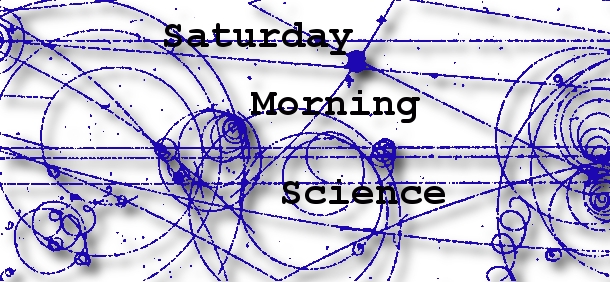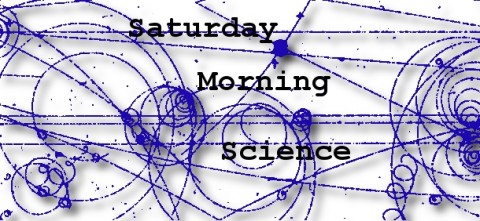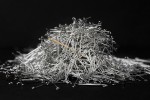Saturday Morning Science 002
The quantum world got weirder, a respected scientist got weirder, the Vikings may have used polarized light to navigate and there’s a comet flyby for Valentine’s Day.
 Spooky Action in Time– “The greatest significance of our result is almost certainly in some application that is yet to be imagined.” In an interview with PhysOrg, S. Jay Olson of the University of Queensland summed up the implications of his paper with fellow physicist Timothy C. Ralph, “Extraction of Timelike Entanglement from the Quantum Vacuum“. Just as some of us are trying to get comfortable with the phenomenon of quantum entanglement between two spatial separated particles, along comes this little, eight- page, thought experiment that proposes a method for observing quantum entanglement in time. “Classic” quantum entanglement (a phrase I thought I’d never use) involved a phenomenon that Einstein referred to as “spooky action at a distance”. Briefly, two entangled particles will behave in complementary ways even when they are separated by distance. One direct effect of this is to lead popular science writers to start going on about faster than light communication and teleportation. More sober types see in this a resource for quantum based computing.
Spooky Action in Time– “The greatest significance of our result is almost certainly in some application that is yet to be imagined.” In an interview with PhysOrg, S. Jay Olson of the University of Queensland summed up the implications of his paper with fellow physicist Timothy C. Ralph, “Extraction of Timelike Entanglement from the Quantum Vacuum“. Just as some of us are trying to get comfortable with the phenomenon of quantum entanglement between two spatial separated particles, along comes this little, eight- page, thought experiment that proposes a method for observing quantum entanglement in time. “Classic” quantum entanglement (a phrase I thought I’d never use) involved a phenomenon that Einstein referred to as “spooky action at a distance”. Briefly, two entangled particles will behave in complementary ways even when they are separated by distance. One direct effect of this is to lead popular science writers to start going on about faster than light communication and teleportation. More sober types see in this a resource for quantum based computing.
Olson and Ralph have upped the game by looking for entanglement in time. Note that what they are proposing is just a thought experiment. It took over thirty years for spatial entanglement to be demonstrated experimentally (quantum entanglement was described by Albert Einstein, Boris Podolsky and Nathan Rosen in 1935, and was verified in 1972 by Stuart Freedman and John Clauser) but with the rate at which quantum effects are being exploited towards their use in computing we shouldn’t have to wait that long. What they are proposing is not the basis for a time travel device but something much weirder, a method for actually observing entanglement in a quantum vacuum which, as Olson points out, could lead to “a technological resource (that) would potentially give us a way to build quantum devices with just empty space as the most fundamental ingredient.” That’s weird enough for me.
 Of Quarks and Quacks -Consider the case of one Luc Montagnier, the Nobel prize winning, French virologist. He shared the 2008 prize with Françoise Barré-Sinoussi for their discovery of HIV. That work was done back in the early 1980’s but there were competing claims as to who discovered the HIV to AIDS link. The irony here is that although it took over twenty years to be recognised, one of the achievements of the team was in how quickly they were able to identify and isolate the virus. In the words of the Nobel Assembly, “Never before have science and medicine been so quick to discover, identify the origin and provide treatment for a new disease entity.”
Of Quarks and Quacks -Consider the case of one Luc Montagnier, the Nobel prize winning, French virologist. He shared the 2008 prize with Françoise Barré-Sinoussi for their discovery of HIV. That work was done back in the early 1980’s but there were competing claims as to who discovered the HIV to AIDS link. The irony here is that although it took over twenty years to be recognised, one of the achievements of the team was in how quickly they were able to identify and isolate the virus. In the words of the Nobel Assembly, “Never before have science and medicine been so quick to discover, identify the origin and provide treatment for a new disease entity.”
I mention this gap between Montagnier’s work and it’s recognition because I’d like to bring a little bit of perspective on what is to follow. Montagnier did not get the Nobel prize and then become a fringe scientist. He’s been at it for a while now. I first encountered his work in TechWorld article entitled, “DNA molecules can ‘teleport’, Nobel Prize winner claims“. How could I pass this one up? Who would have guessed that subjecting a test tube of DNA to a low frequency (7 Hz if you want to DIY this one) electromagnetic field would make duplicate DNA in test tube filled with nothing but water? I could probably duplicate these results by omitting the electromagnetic generator and not cleaning my test tubes properly. I bet you I’d get even more DNA, not just trace amounts, using my method. For a more critical look at Montagnier’s work in the area of autism in particular and Nobel prize winners going off the grid in general check out this article by science blogger “Orac” at Respectful Insolence.
 I Got Sunshine on a Cloudy Day -File this one under “Neat Ancient Stuff that Might be Possible”. Researchers from Hungary and Sweden have been investigating whether the Vikings ‘ legendary “sunstones” might have been light polarizing crystals. Courtesy of PhysOrg.
I Got Sunshine on a Cloudy Day -File this one under “Neat Ancient Stuff that Might be Possible”. Researchers from Hungary and Sweden have been investigating whether the Vikings ‘ legendary “sunstones” might have been light polarizing crystals. Courtesy of PhysOrg.
 Valentine’s Day Comet– Finally, this one should have been in last week’s column on NASA’s latest run of space probe achievements. The Stardust-NExT spacecraft will flyby comet Tempel 1 at approximately 8:37 p.m. PST (11:37 p.m. EST), on Feb. 14. It’s a follow-up to the 2005,Deep Impact mission to Tempel-1 and will give us a look at the physical and chemical changes that comets undergo after they swing around the Sun. Details at Science Daily.
Valentine’s Day Comet– Finally, this one should have been in last week’s column on NASA’s latest run of space probe achievements. The Stardust-NExT spacecraft will flyby comet Tempel 1 at approximately 8:37 p.m. PST (11:37 p.m. EST), on Feb. 14. It’s a follow-up to the 2005,Deep Impact mission to Tempel-1 and will give us a look at the physical and chemical changes that comets undergo after they swing around the Sun. Details at Science Daily.





